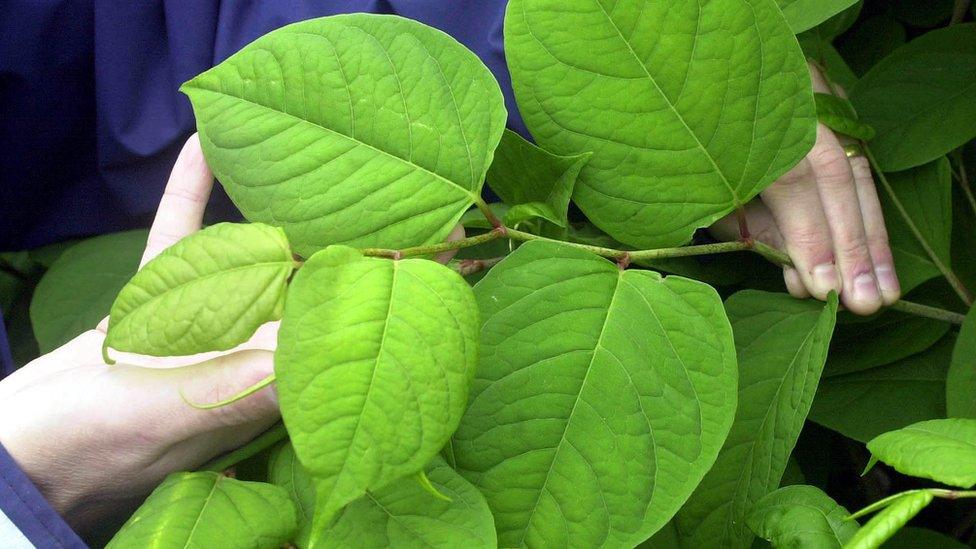How close is Japanese knotweed getting to my home?
- Published
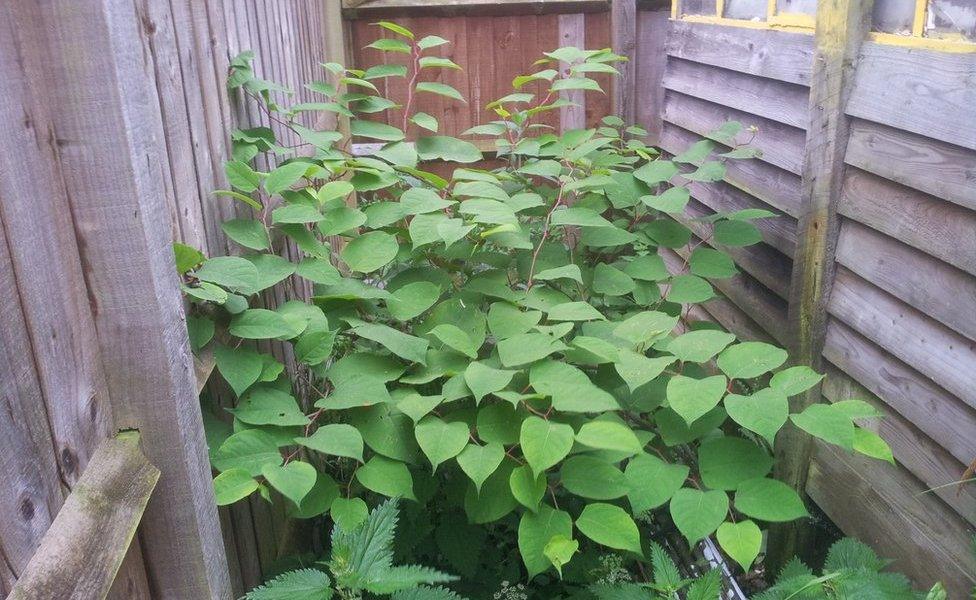
Knotweed can grow at a rate of 10cm per day in the summer
Back in the nineteenth century, when Victorian engineers were designing the latest in transport technology, Japanese knotweed sounded like a very clever idea.
A plant that typically colonised volcanoes in Japan was imported to Britain to help hide, or possibly even stabilise, railway embankments.
Since then its spread has caused much unhappiness amongst home-owners and prospective house purchasers.
It can crack tarmac, block drains, undermine foundations and invade homes. Its presence can be enough to cut a property's value by up to 20%, or prevent a mortgage lender approving a loan.
But just as new technology created the problem originally, new technology may help to solve it.
How close is it to me?
Five years ago, the Environment Agency commissioned a new app to track Japanese knotweed, using the crowd-sourcing principle.
More than 20,000 people have now downloaded it, and their data has pinpointed over 6,000 knotweed locations.
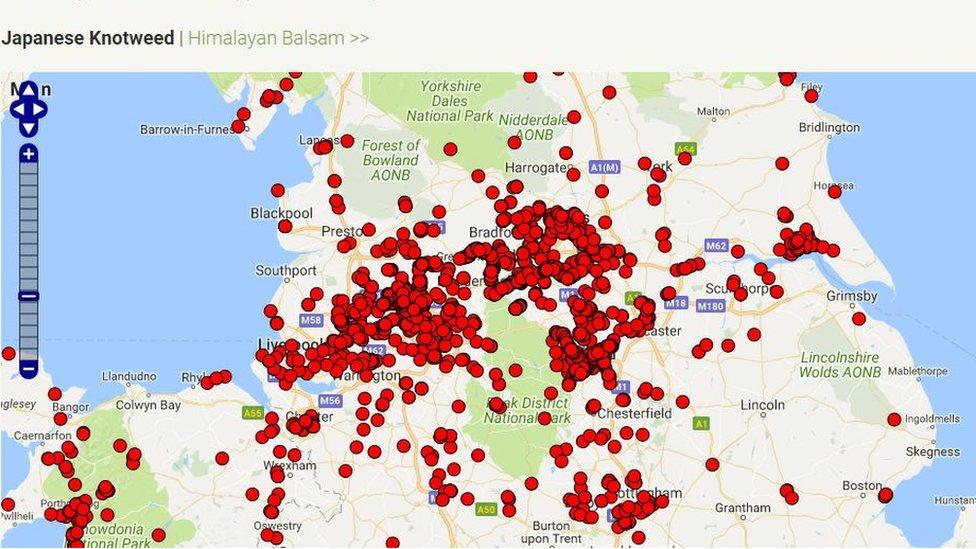
Click here to view full UK map, external, and then zoom in to your area
"If we can get more people taking an interest and submitting records, so much the better," says Dave Kilbey, director of Natural Apptitude, which designed and launched the app.
"Hopefully it will mean people will become a bit more aware of the problems, and what to look for."
So far the results show a particular concentration of knotweed in South Wales, the Midlands, London, Scotland's central belt and Cornwall - where the plant was also introduced by Victorians into ornamental gardens.
Those looking for a property can use the app to find out if knotweed has been found nearby - but the fact it is not on the map does not mean it is not present; it is simply that no one has reported it.
Get PlantTracker app: IoS phones here, external; Android phones here, external

How to recognise Japanese knotweed
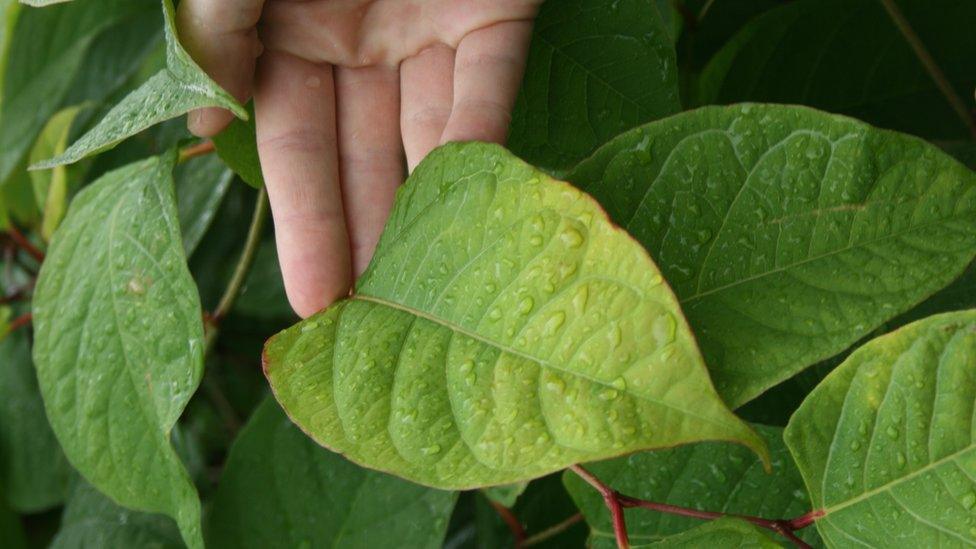
The plant was first imported to the UK in the 19th century
Dense thickets of green, purple-speckled, bamboo-like stems up to three metres tall
Heart or shield-shaped leaves
Alternate leafing pattern along stems
Completely hollow stems that can be snapped easily
Tiny creamy white flowers August to October

Rivers and canals
The data provided by the PlantTracker app is also added to the National Biodiversity Network (NBN) atlas, which aims to track the whereabouts of all the UK's plants and animals, from bee orchids to goshawks.
Even though it has only been available to the public since April, and is not yet fully functional, the atlas has further information about Japanese knotweed locations.
The map shows more than 43,000 historical records for the plant, going back to 1900.
But Purba Choudhury, communications officer for the NBN, says that if there are no records in your area, that doesn't guarantee its absence.
"Conversely, the record you are seeing might be an old record, and the Japanese knotweed might have been removed since the record was uploaded," she says.
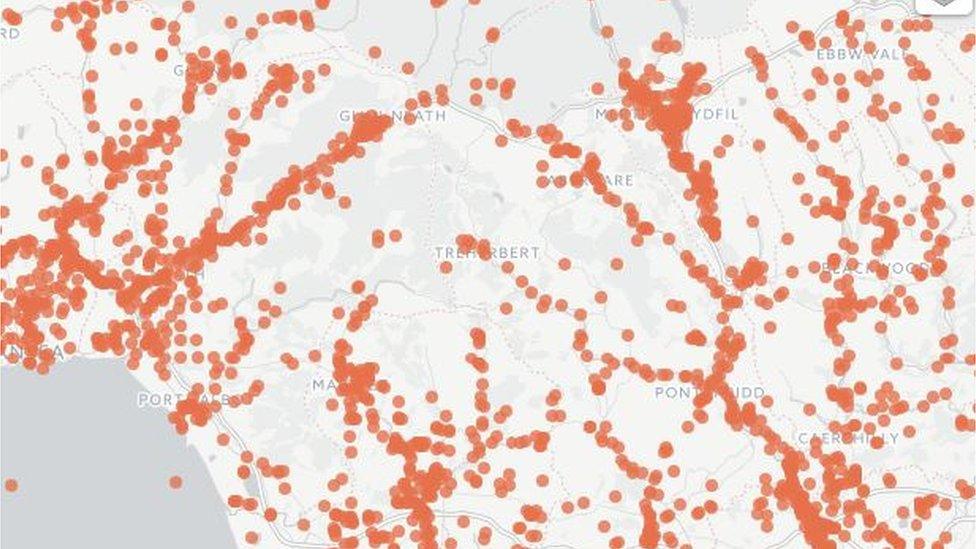
Certain areas of the UK are worst affected, such as South Wales
Click here to view full NBN map of the UK, external, then zoom in to your area
The South Wales section of the NBN map (above) shows how knotweed spreads along the course of rivers and canals.
In such locations tiny fragments of knotweed float downstream, and quickly establish themselves elsewhere.
What if I find knotweed?
Trying to destroy Japanese knotweed by yourself is virtually impossible.
That is because the roots, or rhizomes, spread rapidly underground, and can regenerate from tiny amounts of material. In fact it can grow at the rate of 10cm a day during the summer.
"Digging it out of the ground can just spread it terribly," warns Stephen Hodgson, the chief executive of the Property Care Association (PCA).
"If you've got it in your garden, either leave it alone, or treat it properly."

Injection with glyphosate is the most effective treatment
The advice is as follows:
Do not try to dig it up: Tiny root fragments can regenerate into another plant
If you cut down the branches, dispose of them on-site. Compost separately, preferably on plastic sheets
Do not take it to your local council dump. It needs specialist waste management
Do not dispose of it in the countryside. This is against the law
Do not spread the soil. Earth within seven horizontal metres of a plant can be contaminated
Take advice from the Invasive Non-Native Specialists Association (INNSA) or the Property Care Association (PCA) on local removal contractors. Many treatments don't work
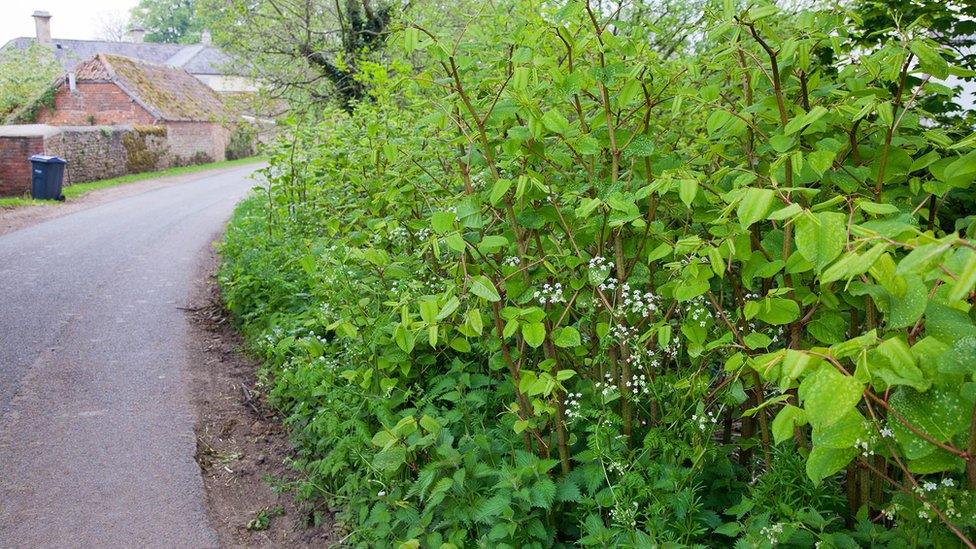
The plant can dominate roadsides
In an experiment being conducted in South Wales, thousands of plant lice were released last summer, in the hopes that they would help destroy some of the knotweed along river banks.
But otherwise the accepted best-practice treatment is for professionals to inject the plant with industrial-strength weed killer glyphosate.
David Layland, the joint managing director of Japanese Knotweed Control, based in Stockport, says it is the only thing that works.
"Once we inject into it, it transfers into the root system pretty quickly, and then it binds with the roots. Over time, it rots away into the subsoil."
But professional treatment is costly, starting at about £2,500, and going upwards to £30,000 for a major infestation.
Court case
Just as big a worry for many home-owners is the discovery that your neighbour has Japanese knotweed on his or her property, and refuses to do anything about it.
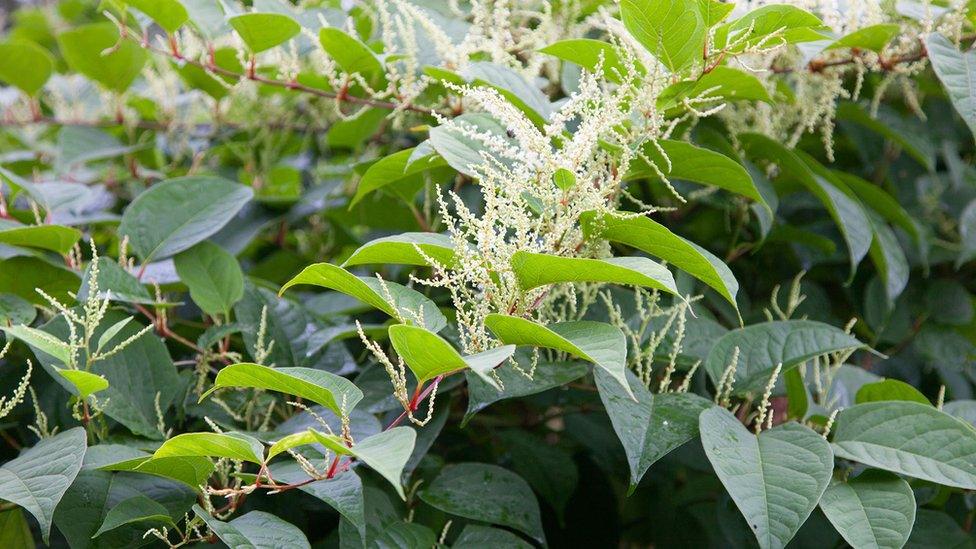
Knotweed flowers between August and October
But under the 2014 Anti-Social Behaviour, Crime and Policing Act, external, local councils or police forces can now issue a Community Protection Notice (CPN), forcing neighbours to take action, and fining them if they don't.
"I think when they are enforced - and they are starting to be enforced - CPNs are very effective," says Stephen Hodgson.
"But they are, and should be, a measure of last resort."
In the meantime judges at the Court of Appeal are gearing up to provide an important precedent on who should pay if a landowner allows knotweed to encroach on somebody else's property.
Next year they will rule on the case of Williams v Network Rail - after two homeowners in South Wales were awarded £15,000 to compensate them for knotweed which had spread into their gardens.
- Published4 February 2017
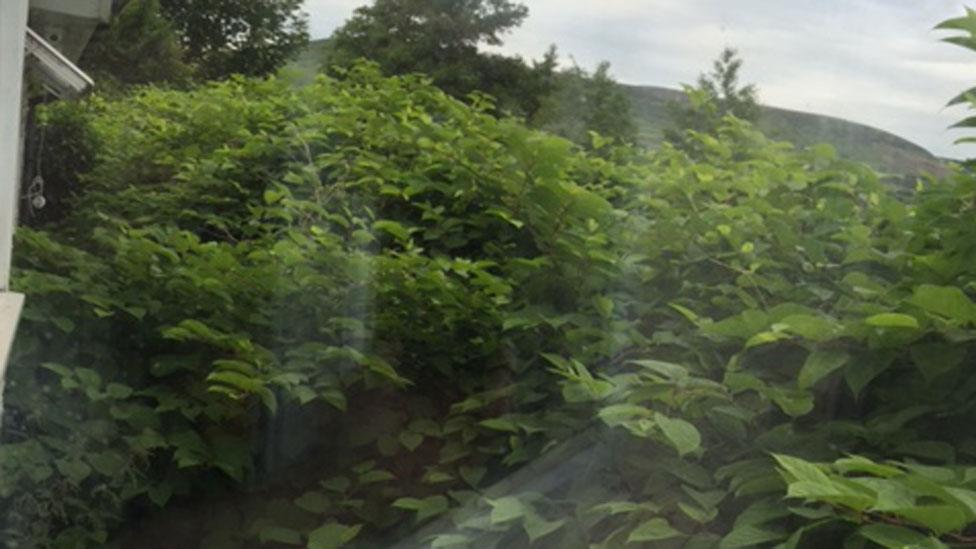
- Published23 July 2016
